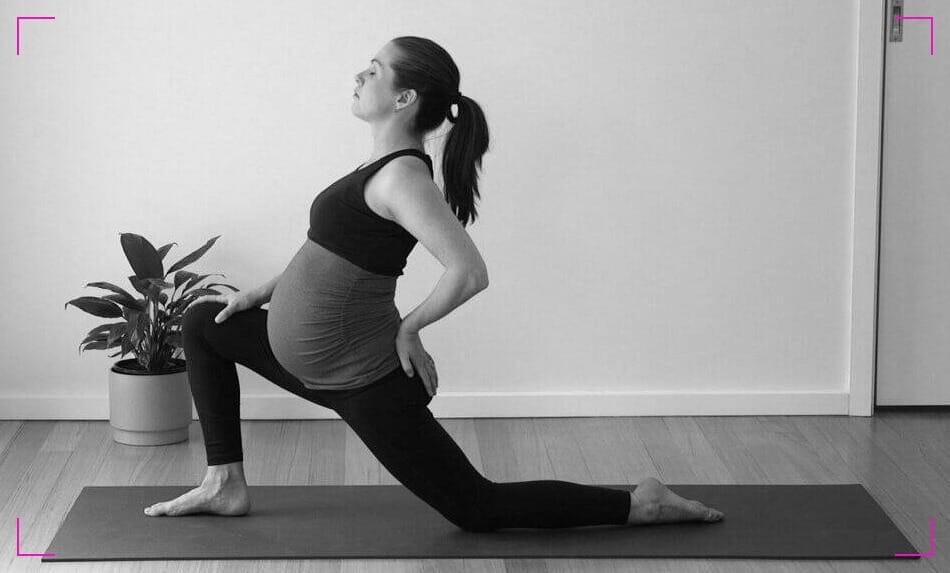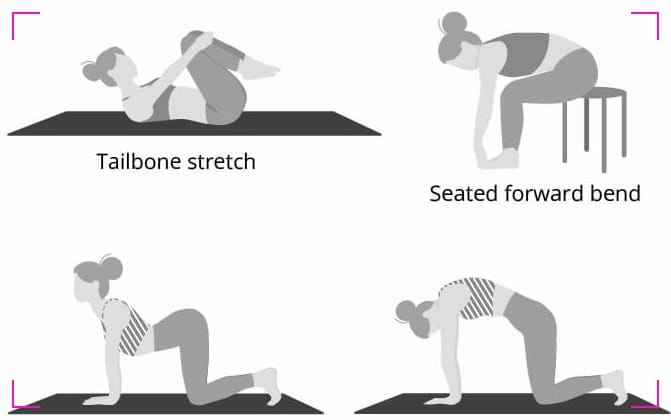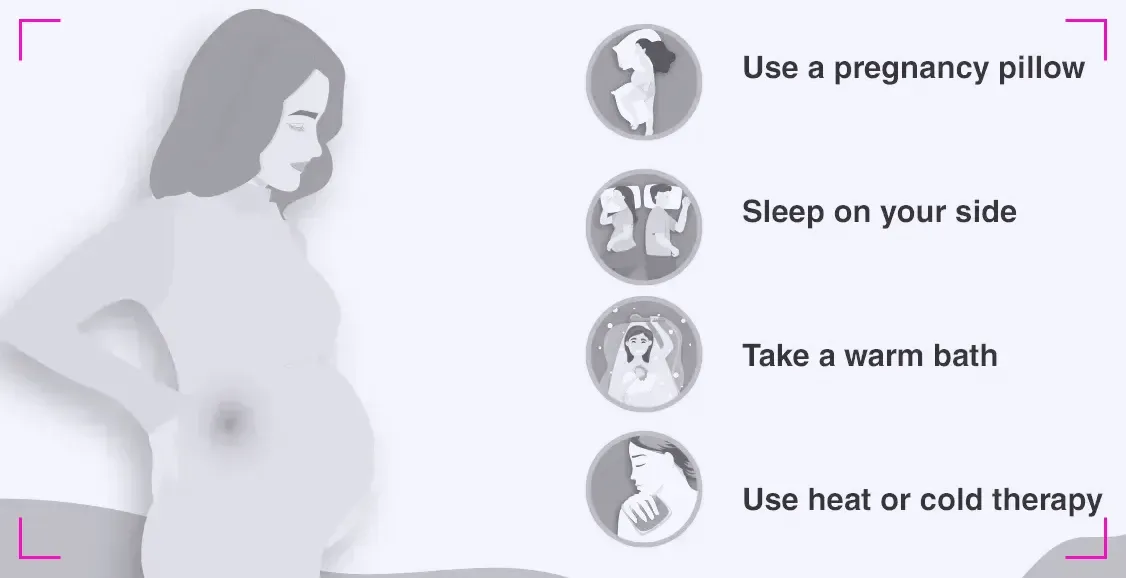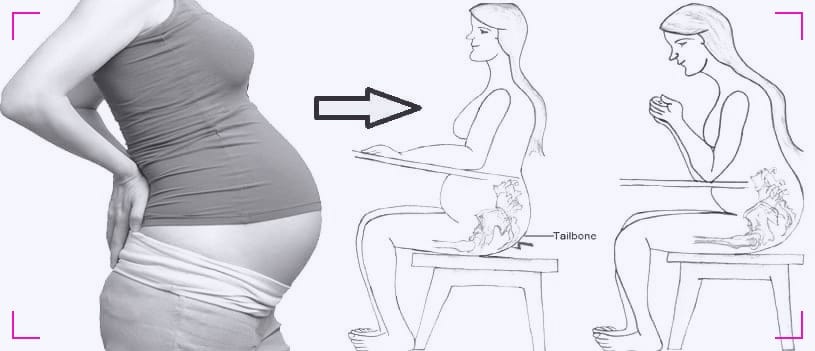Pain At Tailbone During Pregnancy - A Guide
This article explores the causes, normalcy, and strategies for managing tailbone pain during pregnancy, empowering individuals with insights for a more comfortable maternity experience.

Pregnancy is a time of significant change for a woman's body, and with it can come a variety of discomforts, one of which is pain at the tailbone. This condition, known medically as coccydynia, can be a source of distress and impact daily activities.
In this comprehensive guide, we'll explore the causes, management strategies, and when to seek medical attention for pain at the tailbone during pregnancy.
Key Takeaways:
- Pain at the tailbone during pregnancy is a common condition that can be managed with various strategies.
- Understanding the causes and preventive measures can help mitigate the discomfort.
What Causes Tailbone Pain in Pregnancy?
The tailbone, or coccyx, is the small bone at the bottom of your spine. During pregnancy, the body undergoes several changes that can lead to discomfort in this area. These include the growth of the baby and the shifting of the weight distribution as the baby grows.
Another reason for pain at the tailbone is the hormone relaxin, which loosens ligaments and joints in preparation for childbirth. This can cause instability and pain in the pelvic area, including the tailbone.
Another contributing factor is the additional weight and altered center of gravity as the baby grows. This can put extra pressure on the spine and tailbone, especially when sitting for long periods or during certain movements.
Managing Tailbone Pain During Pregnancy
To alleviate pain at the tailbone during pregnancy, it's important to focus on posture and support.
Using a donut-shaped pillow or a wedge cushion when sitting can help relieve pressure on the coccyx.
Additionally, incorporating gentle exercises, such as prenatal yoga or swimming, can strengthen the muscles around the tailbone and improve posture.

It's also beneficial to avoid prolonged sitting and to take frequent breaks to stretch and move around. Avoiding strenuous activity and avoiding activities that put pressure on the tailbone can help alleviate discomfort.
When rising from a seated position, doing so slowly and using the arms to support can help minimize discomfort. If you are experiencing severe pain, take a break from activities that put pressure on your tailbone and contact your doctor.
How to Take Pressure off Your Tailbone
Taking pressure off your tailbone improves the quality of your pregnancy. Read more here about the causes of lower back pain in general or during pregnancy.
Some strategies you might consider:

- Use a Cushion or Pillow
Place a cushion or a specially designed donut-shaped pillow under your buttocks when sitting. This helps distribute your weight and reduces direct pressure on the tailbone. - Practice Good Posture
Sit and stand with proper posture to maintain the natural curve of your spine. Avoid slouching, and use supportive chairs with a straight back when possible. - Warm Compresses
Apply warm compresses to the lower back and tailbone area. This can help relax muscles and alleviate tension, reducing pain and discomfort. - Gentle Exercises
Engage in prenatal exercises that are gentle on the lower back and tailbone. Prenatal yoga and swimming are often recommended as they provide overall body support and promote flexibility. - Pelvic Tilts
Perform pelvic tilts to strengthen the pelvic muscles and reduce pressure on the tailbone. Lie on your back with your knees bent and gently tilt your pelvis upward, holding the position for a few seconds.
Exercises
Engaging in regular pelvic floor exercises, such as Kegels, can help support the tailbone and reduce pain.
These exercises strengthen the muscles that support the bladder, uterus, and bowels, which can be beneficial during pregnancy and after childbirth.

Additionally, gentle stretching exercises that target the lower back and hips can improve flexibility and reduce tension in the tailbone area.
A healthcare provider or physical therapist can guide safe and effective exercises for pregnancy.
Diet and Hydration
Maintaining a healthy diet and staying hydrated can also play a role in managing tailbone pain.
A balanced diet rich in calcium and vitamin D supports bone health, while proper hydration can prevent constipation, which can exacerbate tailbone pain.
Including foods with anti-inflammatory properties, such as omega-3 fatty acids found in fish and flaxseeds, can also help reduce inflammation and discomfort in the tailbone area.
The Impact of Sleep Position
Sleep position can influence tailbone pain during pregnancy. Sleeping on the side with a pillow between the knees can help align the spine and reduce pressure on the tailbone. Using a pregnancy pillow for additional support and comfort is also recommended.
Avoid sleeping on the back, especially in the later stages of pregnancy, as this can put extra strain on the spine and tailbone, as well as potentially affect blood flow to the baby.
Alternative Pain Relief Methods
For some women, alternative methods such as acupuncture or chiropractic care can relieve tailbone pain.
These therapies should be pursued under the guidance of a certified professional with experience in treating pregnant women.

Warm baths or the application of heat packs to the affected area can also offer temporary relief by relaxing the muscles and reducing pain.
Preparing for Childbirth
As childbirth approaches, it's important to discuss any concerns about tailbone pain with a healthcare provider.
They can offer advice on birthing positions that may minimize pressure on the tailbone and provide strategies for pain management during labor.
Understanding the potential impact of tailbone pain on the birthing process can help women make informed decisions and prepare for a more comfortable delivery.
Will Tailbone Pain Improve after Childbirth?
Tailbone pain experienced during pregnancy often improves after childbirth, but the extent and timing of improvement can vary for each individual.
Several factors contribute to tailbone pain during pregnancy, including increased pressure on the pelvic area, hormonal changes affecting ligaments, and the position of the baby.
After childbirth, as the uterus shrinks and hormonal levels return to normal, the pressure on the tailbone typically decreases.
Additionally, any strain or trauma experienced during childbirth can affect the tailbone area.
Summary
Pain at the tailbone during pregnancy is a common issue that arises from hormonal changes, weight gain, and shifts in posture. By understanding the causes and implementing strategies such as proper support, exercise, and alternative therapies, women can manage this discomfort effectively. Always consult a healthcare provider for personalized advice and to ensure the best care for both mother and baby.
FAQ Section
Q 1: Why Do I Experience Pain at the Tailbone During Pregnancy?
A: Experiencing pain at the tailbone during pregnancy is a common concern. This discomfort, known as coccydynia, often arises due to increased pressure on the coccyx caused by the growing uterus. As the baby develops, it shifts the body's center of gravity, leading to extra strain on the tailbone area.
Hormonal changes during pregnancy can also affect ligaments and joints, contributing to tailbone pain. To alleviate this discomfort, consider using a specially designed pregnancy pillow for proper support, practicing gentle stretches, and maintaining good posture.
However, it's crucial to consult with your healthcare provider for personalized advice and to rule out any underlying issues. For more in-depth insights, check out our blog article on "Understanding and Managing Tailbone Pain During Pregnancy.
Q 2: Is Tailbone Pain Normal During Pregnancy, and When Does It Typically Occur?
A: Yes, tailbone pain during pregnancy is not uncommon and is often experienced by many expectant mothers. This discomfort typically occurs due to the increased pressure on the pelvic area and the stretching of ligaments as the baby grows.
The pain may intensify as the baby descends into the birth canal, putting additional stress on the tailbone. Generally, tailbone pain starts in the later stages of pregnancy, around the third trimester. To alleviate this discomfort, consider using a cushion for support while sitting, practicing good posture, and engaging in gentle exercises approved by your healthcare provider.
It's advisable to consult with your obstetrician or healthcare professional for personalized advice based on your specific pregnancy and medical history.
Q 3: What Can I Do to Relieve Tailbone Pain During Pregnancy?
A: Experiencing tailbone pain during pregnancy is a common concern, but there are several strategies to help alleviate discomfort:
- Use a Tailbone Cushion: Invest in a donut-shaped or wedge cushion designed to relieve pressure on the tailbone while sitting.
- Maintain Good Posture: Sit and stand with your back straight, distributing your weight evenly to reduce strain on the tailbone.
- Warm Compresses: Apply warm compresses to the lower back and tailbone area for soothing relief.
- Gentle Exercises: Practice pelvic tilts and gentle stretches to strengthen the muscles supporting the tailbone.
- Avoid Prolonged Sitting: Take breaks to walk or stretch, avoiding extended periods of sitting which can exacerbate pain.
- Prenatal Yoga: Engage in prenatal yoga classes focusing on gentle stretches and poses to ease tailbone discomfort.
- Consult a Healthcare Professional: If the pain persists, consult your healthcare provider for personalized advice and possible therapeutic interventions.
Remember, each pregnancy is unique, and it's essential to tailor these suggestions to your specific needs.
